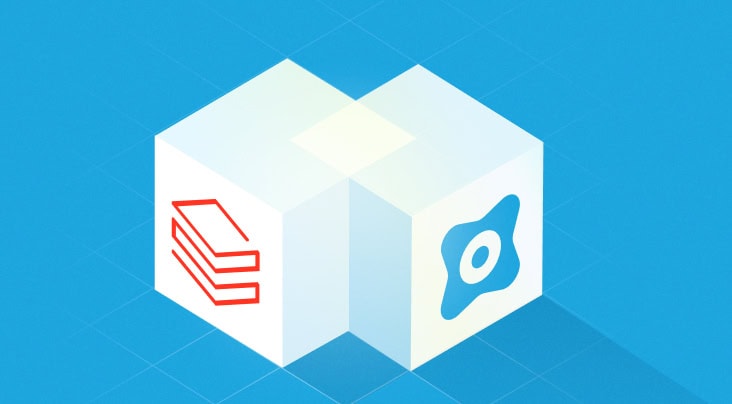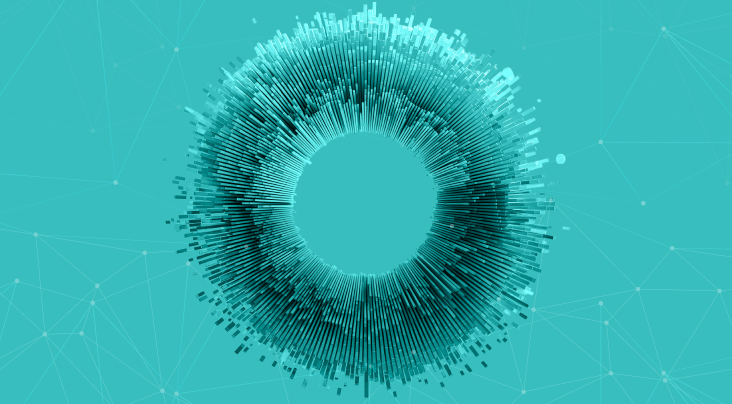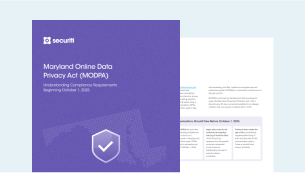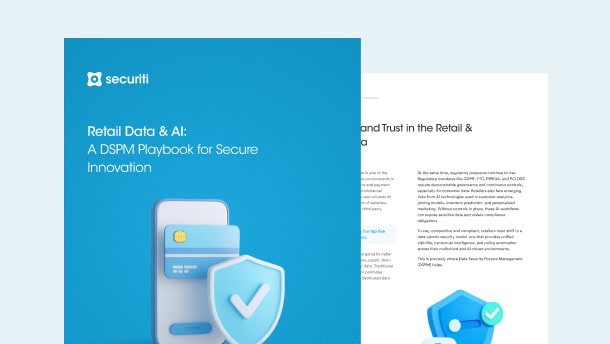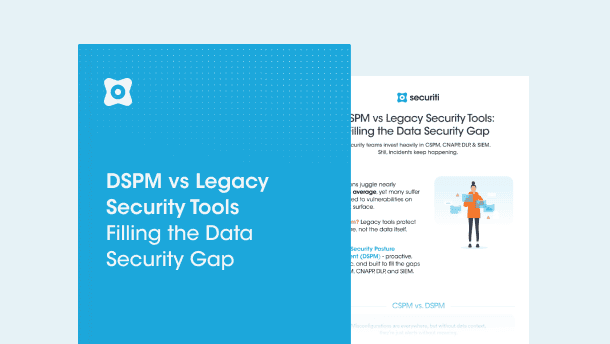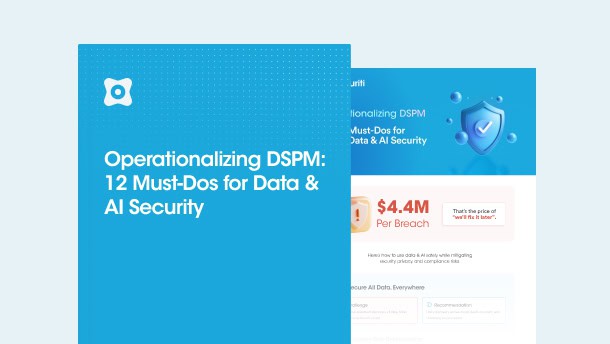Most organizations have plenty of mechanisms in place to process and collect data. However, while collecting and analyzing large swathes of data do afford organizations greater insights into what their customers want, it also comes with certain responsibilities.
One such responsibility is to adequately protect and store any personally identifiable information (PII). The sensitive nature of PII means that an organization has a heightened responsibility to secure any PII in its possession. Failure to do so can lead to an irreversible loss of customer trust in the organization's security practices.
With that in mind, a PII compliance checklist would go a long way in ensuring that an organization has all the fundamental structures and mechanisms to comply with any regulatory requirements while adopting the best practices.
What is PII?
In the simplest of terms, personally identifiable information (PII) refers to any piece of data that can be used to identify an individual. Organizations can utilize PII either by itself or in combination with other data to identify a person. Examples of PII include the following:
- Real name,
- Home address,
- Age,
- Email address,
- Phone number,
- Financial information,
- Genetic information,
- Biometric information,
- Racial information,
- National ID card number,
- Geolocation data,
- Passport information,
- Driver's license details,
- IP address.
Learn more about What is Personally Identifiable Information (PII)
What is the Need for PII Compliance?
Most data protection regulations obligate organizations to undertake the appropriate and adequate measures to protect all data they collect from users online. Some regulations provide detailed provisions related to what steps an organization must take.
Since data leaks and breaches have been on the rise, it makes sense for organizations to invest in undertaking the best practices and measures available to protect any PII it collects. Doing so enables organizations to be compliant and gain customers’ trust.
Once users agree to let organizations collect PII, they expect this data to be appropriately protected. PII compliance is one way for an organization to ensure it has undertaken all relevant measures and steps to protect all its data.
Although simple, these steps go a long way in setting up a secure infrastructure in place at an organization that can adequately protect all PII collected. In the long run, PII compliance can help organizations avoid excessive data breaches and the heavy regulatory fines that come with them.
PII Compliance Checklist
PII compliance can be an arduous task for organizations for various reasons. The principal reason is quite often the fact that since PII compliance regulations vary from country to country depending on the data regulations, organizations need to adapt their security measures accordingly. While posing logistical challenges, such measures also have a financial cost.
However, there are certain compliance steps that can form the basis of any organization's PII compliance checklist for most regulations. These steps include:
Discover, Identify & Classify PII
For an organization to ensure it has a robust infrastructure in place to protect all PII, it must know precisely what PII it collects, where it is stored, where it is being used, and whom it is being sent to.
Furthermore, this process must be done regularly to ensure all PII is adequately discovered, identified, classified, cataloged, stored, and protected. Here guidance should be taken from the relevant data protection regulation of the jurisdiction organization operates, e.g., California Consumer Privacy Act (CCPA)/California Privacy Rights Act (CPRA) or General Data Protection Regulation (GDPR), etc., how these regulations define PII, and what principles they stipulate when handling PII.
Automation would be an ideal solution at this juncture. Organizations can leverage a reliable data identification and classification tool to gain real-time visibility into all their data, including data at rest, data in motion, and data in use. This can help categorize the data as restricted, private, or public data and help with creating respective security measures for each.
Afterward, once all PII assets are identified, they can be appropriately classified and stored based on whatever parameters data regulations require or which the organization deems appropriate. The relevant security measures can be implemented once all data is cataloged.
Create a PII Policy
Most data regulations have detailed provisions related to PII and the organizations' obligations related to them. However, these provisions also guide what steps an organization may take to ensure compliance.
The GDPR is arguably the most noteworthy data regulation, which provides six data processing principles that can aid organizations in developing their PII policy and any necessary PII protection mechanisms. These six principles are as follows:
- PII processing should be lawful, fair, and transparent;
- PII processing should be done for necessary purposes only;
- The use of PII processing should be limited wherever possible;
- Processing should be accurate & timely;
- Processing should be completed within a defined time frame;
- The integrity & confidentiality of the data needs to be maintained.
Organizations are required to demonstrate compliance with these principles.
Even if an organization were not subject to the GDPR, the principles mentioned here offer a reliable outline of what an organization's PII policy should be like. Other data regulations, such as the CPRA, also carry similar provisions that regulate the use of PII by an organization.
As such, a reliable PII policy should cover the following aspects related to its processing:
- The organization's data usage policy;
- Data audit trails;
- Data breach incident response plan;
- Data workflows;
- Data destruction and disposal;
- Data retention.
As mentioned earlier, there's no definitive answer to creating compliant PII practices. However, the abovementioned practices and principles should serve as reliable starting points.
Implement Data Security
Owing to several factors, most importantly, the evolving nature of data threats, organizations must now adopt a layered approach to data security by leveraging various data security measures and mechanisms.
These measures and mechanisms may vary depending on the size of the organization and the scale of the PII they must protect. These include:
- Encryption;
- Multi-factor authentication;
- Endpoint management;
- Secure storage;
- Data Subject Access Requests (DSAR); and
- Cookie and consent management.
Practice IAM
Identity & Access Management (IAM) is an effective security practice that adds a layer of protection around PII. While most security measures tend to focus on external threats, IAM is aimed at internal threats to PII. Using IAM, an organization can effectively curate access to all PII by defining access roles and rights for its internal employees.
By creating a strictly role-based data access routine, an organization can ensure only the most relevant individuals have access to PII on a need-to basis. This lowers both insider threats and the chances of accidental leaks.
Monitor + Respond
As IBM recently revealed in its annual data breach report, most data breaches can go unnoticed for as long as 315 days. That's almost an entire year, and the reason is the lack of consistent evaluation of their resources by organizations.
However, if a breach occurs and the organization becomes aware of it in time, an organization needs to have a robust incident response plan in place. This requires constant monitoring of PII and its security safeguards - any unauthorized access or acquisition should be detected immediately. Doing so not only addresses and mitigates the damage caused by the breach but also initiates any data breach response obligations an organization has per the regulations.
Assess Regularly
For all intents and purposes, this may very well be the most critical part of your organization’s entire PII compliance practice. Regular assessments of the PII your organization holds and the overall data infrastructure help you identify any potential blindspots and any unmet obligations from new laws you may have become subject to.
The latter is particularly important considering the increasing number of data protection regulations being promulgated and implemented across the globe. Each of these regulations has its distinct legal obligations that all organizations falling under certain criteria must follow. Anything less than a robustly proactive approach in ensuring compliance with all data regulations can leave organizations unprepared to protect their PII per the distinct requirements of each regulation.
Additionally, privacy impact assessments (PIA) and data protection impact assessments (DPIAs) are already an established industry practices and major data protection obligations under most regulations respectively. Conducting such assessments regularly can not only help aid your organization in identifying and assessing PII and relevant security measures in place but also ensure that these measures are up to the mark per the regulatory requirements as well as the standard industry practices.
Keep Your Privacy Policy Updated
The Privacy Policy is a major asset for an organization, especially regarding ensuring PII compliance. How so?
Well, a good PII compliance practice is to adopt radical transparency when it comes to all data processing and collection methods employed by an organization. While some regulations actually mandate organizations to provide accurate and up-to-date disclosures of their data processing activities to their users via the privacy policy, it is in the organization’s best interest to do so as well, even if not legally obligated to do so.
An updated Privacy Policy should explain, as thoroughly as possible, how the organization collects data, what data it collects, how that data is used, where such collected data is stored and for how long, how the collected data is protected, where and to whom the collected data is transferred and what rights a user has over this collected data.
As mentioned before, the Privacy Policy can be a tremendous asset since it is by far the most effective way of communication for an organization with its users, informing them of the entire data processing process as well as the necessary steps are undertaken to protect the processed data.
Not only does it guarantee regulatory compliance, but it also ensures an educated user base that is better aware of how their personal data, sensitive and non-sensitive, is collected, why, and the measures in place to adequately protect it.
How to Protect PII With Securiti
Data is an invaluable resource for organizations. Some may argue it is perhaps the most valuable resource. This would explain the burgeoning number of data breach incidents over the last few years. And since much of the data an organization holds may contain PII, it makes just as much sense for data regulations to place obligations on organizations to undertake concrete measures to protect their data.
A data breach can prove to be a reputational, regulatory, and financial disaster for an organization. Hence, PII compliance should not only be a regulatory obligation for an organization but a strategic target.
Securiti is a market leader in providing enterprise data governance and compliance solutions. Each solution provides the highest degree of data protection and compliance with all major regulatory requirements.
One such solution is its Sensitive Data Intelligence (SDI), which allows an organization to automate critical aspects of securing PII, such as data classification and labeling, leading to a sensitive data catalog that visualizes the distribution of sensitive data elements in an organization's structured & unstructured data systems. Other modules, such as consent management, assessment automation, privacy management, vendor assessment, and DSR automation, can all help an organization comply with various obligations as far as PII is concerned.
Furthermore, Securiti’s access intelligence solutions provide granular insights into existing access settings, sensitive data, regulations, and user behavior to provide a holistic view of an organization's current risk posture while reducing the chances of data leaks via strict access controls.
Request a demo today and learn more about how Securiti can help your organization secure PII within its data infrastructure today.
Key Takeaways:
- The content outlines the critical importance of compliance with Personally Identifiable Information (PII) regulations for organizations that collect, process, or store data that can identify individuals.
Here are the key takeaways: - Definition and Importance of PII: PII includes any data that can identify an individual, such as name, address, email, financial information, and more. Organizations must protect this information due to its sensitive nature and the potential consequences of data breaches.
- Need for PII Compliance: Compliance ensures that organizations adopt adequate measures to protect collected data, aligning with data protection regulations and building customer trust.
- PII Compliance Checklist:
- Discover, Identify, & Classify PII: Organizations must continuously discover, identify, and classify PII to know what data they have, where it's stored, and how it's protected.
- Create a PII Policy: Developing a comprehensive PII policy based on data processing principles, like those in the GDPR, helps in setting a secure infrastructure.
- Implement Data Security Measures: Utilizing encryption, multi-factor authentication, secure storage, and other security measures is essential for protecting PII.
- Practice Identity & Access Management (IAM): IAM helps manage internal threats by ensuring that only authorized personnel have access to sensitive PII.
- Monitor and Respond: Continuous monitoring and a robust incident response plan are crucial for quickly addressing data breaches.
- Assess Regularly: Regular assessments and privacy impact assessments (PIA/DPIAs) help organizations stay compliant with evolving data protection regulations and industry standards.
- Keep Your Privacy Policy Updated: An up-to-date privacy policy ensures transparency with users regarding data collection, processing, and protection practices. - Protection and Compliance with Securiti: Securiti offers solutions like Sensitive Data Intelligence (SDI) for automating data classification, consent management, privacy management, and more, assisting organizations in achieving and maintaining PII compliance.
Frequently Asked Questions (FAQs)
PII compliance means following laws to protect personal information like names, addresses, and financial details. It helps keep data safe when it is collected, stored, or shared to prevent misuse or unauthorized access.






